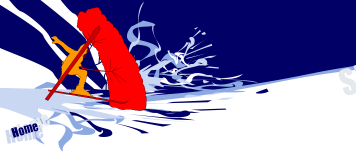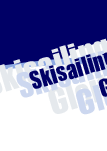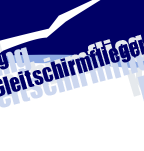LEXICON OF THE ALPS: PARACHUTESAILING, SKISAILING
Parachute sailing, skisailing, variety of alpine sking, technique of uphill transportation developed by D. Strasilla in 1974/75. Devices: floating parachutes or ski parachutes, parachutes with an effective surface between 25m2 and 56m2 developed by NASA to recover satellites and rockets (satellite parachute; rocket recovery parachute); used on a rotating basis according to wind speed; 28 shroud lines are attached to an aluminum tube ("steering frame"); the steering frame is hooked up to a mountaneer belt - worn on the chest and connected to a mountaineer lap belt - via a fiffihook.
![]()
The lower half of the parachute has airslots which can be varied in size by pulling the so-called steering tethers; tailwind generates an airflow in the open halfsphere of the chute; it is deflected dowwards by the openings. The repulsion makes the chute soar so that there is no line-of-sight obstruction for the pilot. A kind of release cord is attached to the centre of the chute and connected to the chest belt of the pilot so he can break away from the pulling force of the chute at the arrival point.
Technique: P. can be done at wind speeds between 20km/h and 70km/h depending on the slope; while going uphill the left and right half of the chute can be extended and retracted independently. That way a correction of the flying direction diverging up to 20" from the movement of the air is possible. The opening slots in the chute generate a jet effect for taking bends to the left and the right; they even allow zigzag tacking against the wind. The skis are strongly edged in the process. A release frame is used in case of emergency (unexpected obstacles, heavy wind). It separates steering tethers and shroud lines from the chestbelt; the cord attached to the centre of the chute upends the nylon sail (like an umbrella in a storm). In the Bernese Alps, D. Strasilla went from Betmeralp across 22km long Aletsch Glacier up to Jungfraujoch; he also passed the slopes of Titlis, Marmolada, Grande Motte and other mountains.
P. gear weighs about 17kg and costs about 1500 DM. Most important qualification: excellent command of alpine skiing techniques.
LEXIKON DER ALPEN,
Toni Hiebeler,
Bertelsmann Lexikon-Verlag, 1977




